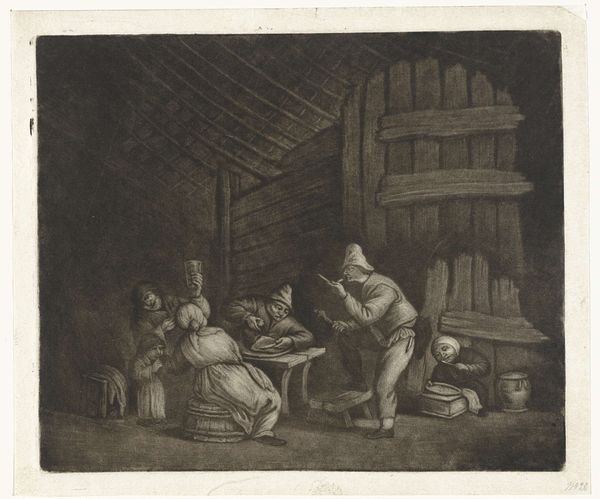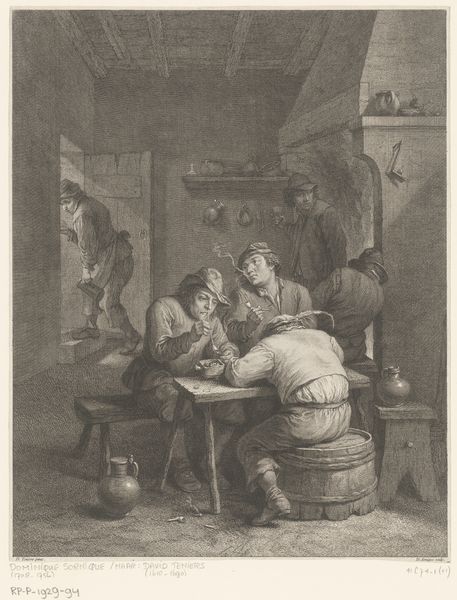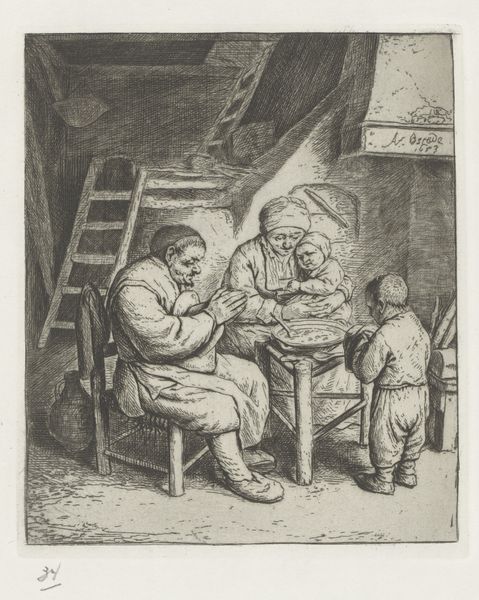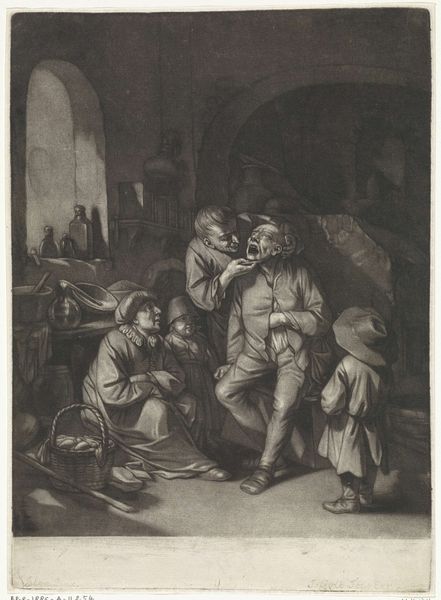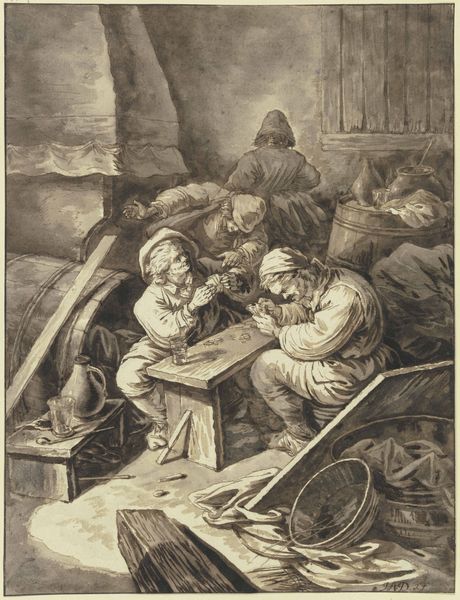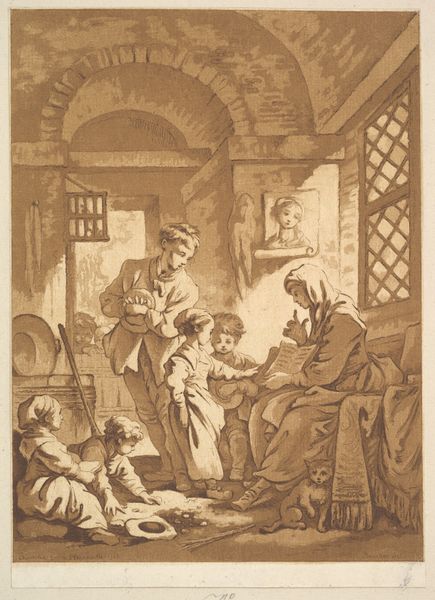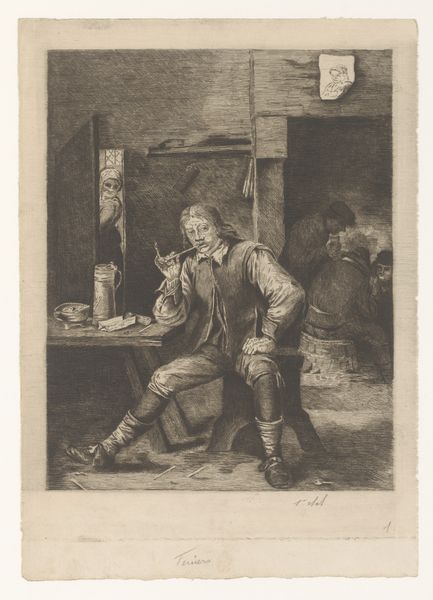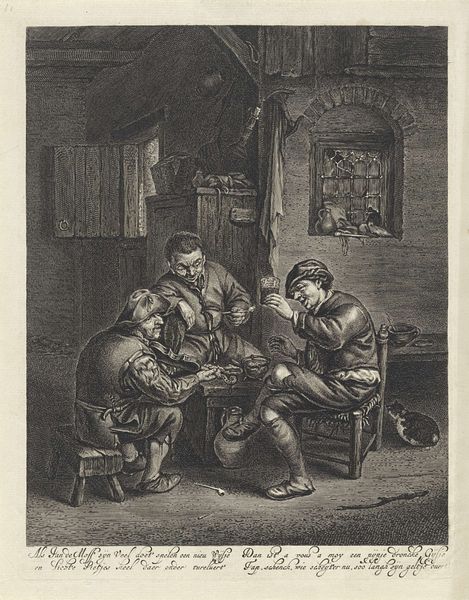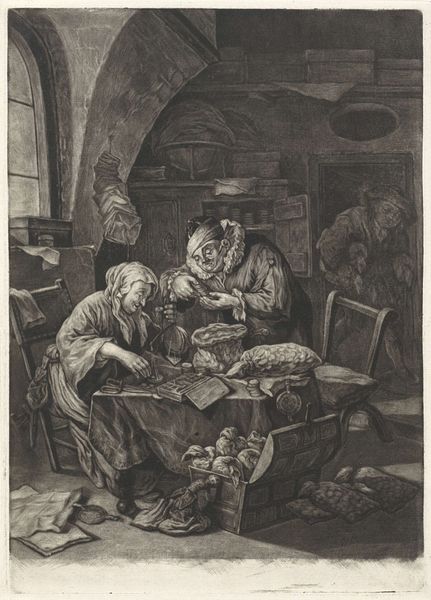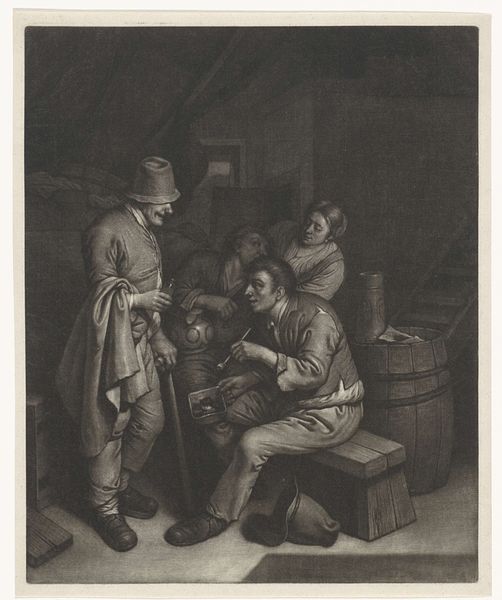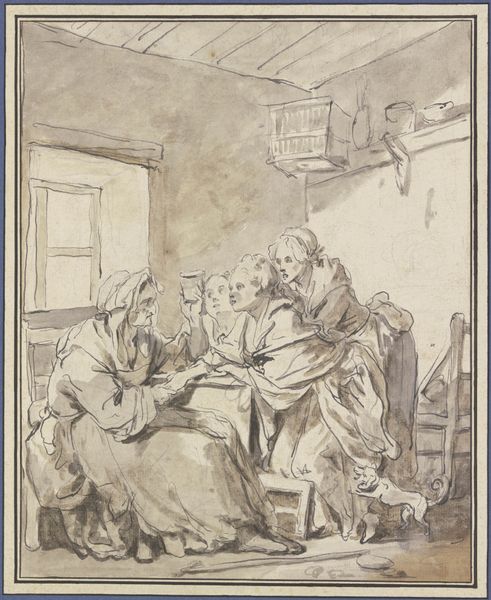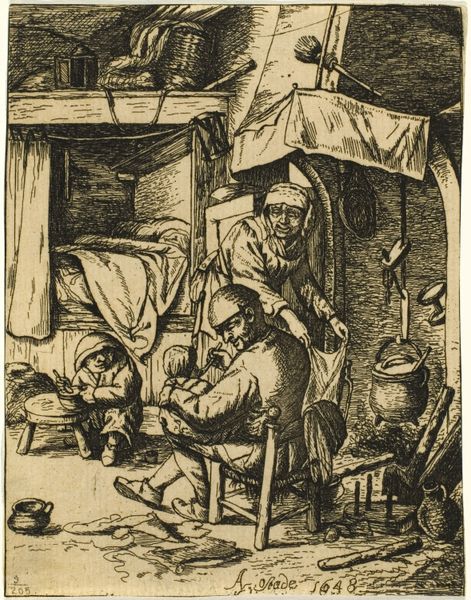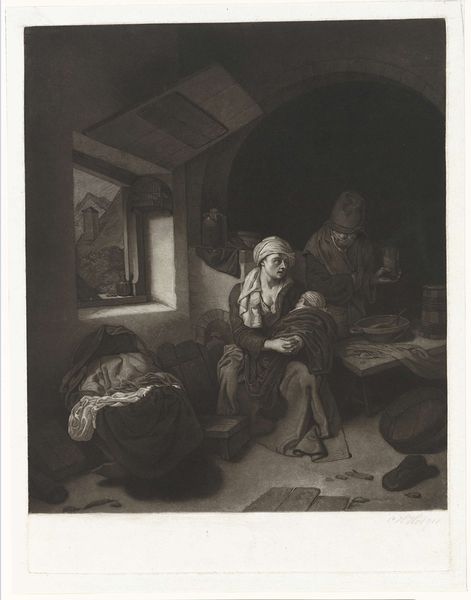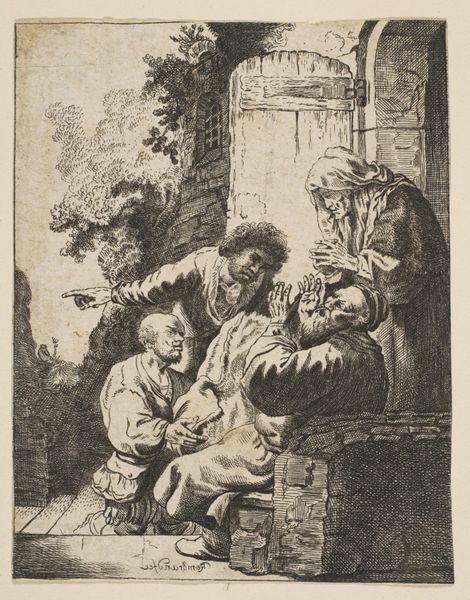
drawing, print, etching, ink, pen
#
portrait
#
drawing
#
narrative-art
# print
#
etching
#
pencil sketch
#
charcoal drawing
#
charcoal art
#
ink
#
pencil drawing
#
pen
#
portrait drawing
#
genre-painting
#
charcoal
#
watercolor
Dimensions: height 231 mm, width 190 mm
Copyright: Rijks Museum: Open Domain
Jacob Hoolaart created this etching, "Vioolspelende, rokende en drinkende mannen," sometime in the 1700s, using metal plate and acid. The etching process allowed Hoolaart to achieve fine details and tonal variations. He would have coated a metal plate with a waxy, acid-resistant substance, then scratched his design into it with a needle. The plate was then immersed in acid, which bit into the exposed lines, creating grooves. After removing the wax, the plate was inked, and the surface wiped clean, leaving ink only in the etched lines. Finally, damp paper was pressed against the plate, transferring the image. The resulting print presents a dimly lit tavern scene, with the figures rendered in intricate detail. The etching technique allows for complex shading, enhancing the ambiance of the scene. Hoolaart skillfully captures the textures of the figures' clothing, and the rough surfaces of the tavern interior. The finished work is a tangible record of both Hoolaart's skilled labor and the social life of the period. It reminds us that art is not just about the image, but also about the material processes that bring it into being.
Comments
No comments
Be the first to comment and join the conversation on the ultimate creative platform.
